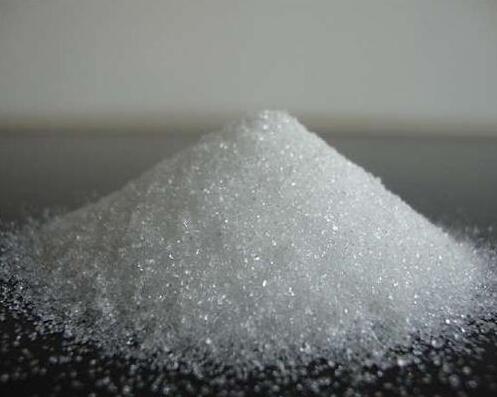Understanding 2,6-Dimethylphenol (CAS 576-26-1): A Key Chemical Intermediate
Introduction
In the vast world of chemistry, certain compounds serve as critical building blocks for a wide range of materials and products we encounter daily. One such versatile compound is 2,6-Dimethylphenol, identified by its CAS number 576-26-1. While not typically a household name, this organic chemical plays a significant role, particularly as an intermediate in the synthesis of various polymers and pharmaceutical agents. This article provides an overview of 2,6-Dimethylphenol (CAS 576-26-1), covering its chemical properties, diverse applications, significance, safety considerations, and manufacturing process, presented in an informative and accessible manner.
Chemical Properties of 2,6-Dimethylphenol (CAS 576-26-1)
2,6-Dimethylphenol belongs to the phenol family, characterized by a hydroxyl (-OH) group attached to a benzene ring. Specifically, it is a dimethylphenol isomer, meaning it has two methyl (-CH3) groups attached to the benzene ring along with the hydroxyl group.
- Chemical Formula: C8H10O
- Molecular Weight: Approximately 122.16 g/mol
- CAS Number: 576-26-1 (This unique identifier is assigned by the Chemical Abstracts Service and helps distinguish it from other chemicals, including its isomers like 2,4-Dimethylphenol or 3,5-Dimethylphenol).
- Appearance: Under standard conditions, 2,6-Dimethylphenol is typically a white or off-white crystalline solid.
- Odor: It possesses a characteristic phenolic odor.
- Melting Point: Around 46-48 °C (115-118 °F).
- Boiling Point: Approximately 201-203 °C (394-397 °F).
- Solubility: It exhibits limited solubility in water but is generally soluble in organic solvents like ethanol, ether, and benzene.
- Structure: The molecule consists of a central benzene ring bonded to one hydroxyl group and two methyl groups located at positions 2 and 6 (adjacent to the hydroxyl group). This specific arrangement of methyl groups influences its reactivity and properties, distinguishing it from other dimethylphenol isomers.
Understanding these fundamental properties is crucial for determining how 2,6-Dimethylphenol (CAS 576-26-1) behaves in chemical reactions and its suitability for various industrial applications.
Key Uses and Applications of 2,6-Dimethylphenol
The primary value of 2,6-Dimethylphenol (CAS 576-26-1) lies in its role as a chemical intermediate – a substance used to synthesize other, often more complex, chemicals. Its applications span several important industries:
-
Polymer Synthesis: Perhaps the most significant application of 2,6-Dimethylphenol is as a monomer for the production of polyphenylene oxide (PPO), also known as polyphenylene ether (PPE). PPO is a high-performance thermoplastic known for its excellent heat resistance, dimensional stability, and electrical insulation properties. It is often blended with other polymers like polystyrene to improve processability and is used in automotive parts, electronics, and industrial equipment. The specific structure of 2,6-Dimethylphenol allows for the oxidative coupling polymerization process that forms PPO.
-
Pharmaceutical Intermediate: 2,6-Dimethylphenol (CAS 576-26-1) serves as a crucial starting material or intermediate in the synthesis of certain pharmaceutical drugs. A notable example is its use in the production pathway of Propofol, a widely used intravenous anesthetic agent. The purity and quality of 2,6-Dimethylphenol are critical in these applications to ensure the safety and efficacy of the final pharmaceutical product.
-
Antioxidants and Stabilizers: Phenolic compounds, including 2,6-Dimethylphenol, can exhibit antioxidant properties. While other phenols might be more commonly used solely as antioxidants, derivatives of 2,6-Dimethylphenol can be synthesized for use as antioxidants or stabilizers in plastics, rubbers, and oils to prevent degradation caused by oxidation.
-
Agrochemicals: It can also serve as an intermediate in the synthesis of certain pesticides and herbicides, contributing to the agricultural sector.
-
Other Chemical Synthesis: Its reactivity makes 2,6-Dimethylphenol (CAS 576-26-1) a useful building block in organic synthesis for creating various specialty chemicals, dyes, and resins.
Significance and Role of 2,6-Dimethylphenol (CAS 576-26-1)
The importance of 2,6-Dimethylphenol stems directly from the value of the products derived from it.
- Enabling High-Performance Materials: Its role in PPO production contributes directly to the availability of durable, heat-resistant plastics essential for modern technology and manufacturing.
- Facilitating Essential Medicines: As an intermediate for pharmaceuticals like Propofol, 2,6-Dimethylphenol (CAS 576-26-1) plays an indirect but vital role in healthcare and medical procedures. The reliable supply of high-purity intermediates like this is fundamental to the pharmaceutical industry.
- Versatility in Chemical Industry: Its ability to participate in various chemical reactions makes it a versatile tool for chemists developing new materials and compounds across different sectors.
While end-users may never directly handle 2,6-Dimethylphenol, its contribution through these downstream applications is significant.
Potential Side Effects and Safety Precautions for 2,6-Dimethylphenol
It is crucial to distinguish between the handling of the raw chemical 2,6-Dimethylphenol (CAS 576-26-1) and the use of finished products (like pharmaceuticals or plastics) derived from it. This section focuses on the precautions necessary when handling the chemical itself, primarily in industrial or laboratory settings.
-
Hazards: 2,6-Dimethylphenol is classified as a hazardous substance.
- Skin and Eye Irritation: Direct contact can cause irritation or potential burns to the skin and eyes. Prolonged or repeated skin contact may lead to dermatitis.
- Inhalation: Inhaling dust or vapors can irritate the respiratory tract. High concentrations may cause systemic effects.
- Ingestion: Ingestion can be harmful and may cause gastrointestinal irritation and other adverse health effects.
- Environmental Hazard: Like many organic chemicals, precautions should be taken to prevent its release into the environment, as it can be harmful to aquatic life.
-
Safety Recommendations: Proper handling procedures are essential to minimize risks:
- Personal Protective Equipment (PPE): Always use appropriate PPE, including chemical-resistant gloves (e.g., nitrile or neoprene), safety goggles or a face shield, and protective clothing.
- Ventilation: Work in well-ventilated areas or use local exhaust ventilation (fume hoods) to minimize inhalation exposure.
- Handling: Avoid generating dust. Handle as a solid where possible. If melting or dissolving, do so under controlled conditions with appropriate ventilation. Avoid contact with skin, eyes, and clothing. Wash hands thoroughly after handling.
- Storage: Store 2,6-Dimethylphenol (CAS 576-26-1) in tightly sealed containers in a cool, dry, well-ventilated area away from incompatible materials (e.g., strong oxidizing agents) and sources of ignition.
- Safety Data Sheet (SDS): Always consult the specific Safety Data Sheet (SDS) provided by the manufacturer for detailed hazard information, handling procedures, emergency measures, and disposal guidelines before working with 2,6-Dimethylphenol.
-
Important Distinction: The safety profile and potential side effects of a finished pharmaceutical product like Propofol are entirely different from the hazards of handling the raw intermediate 2,6-Dimethylphenol. Pharmaceuticals undergo rigorous testing and are administered under controlled medical supervision, with their own specific usage guidelines and side effect profiles managed by healthcare professionals.
Manufacturing Process of 2,6-Dimethylphenol (CAS 576-26-1)
The industrial production of 2,6-Dimethylphenol typically involves the alkylation of phenol. A common method uses methanol as the alkylating agent in the presence of a metal oxide catalyst (like magnesium oxide or alumina-based catalysts) at high temperatures and pressures.
The general steps involve:
- Reaction: Phenol and methanol are reacted in the vapor phase over a suitable catalyst bed. The conditions (temperature, pressure, reactant ratio, catalyst type) are carefully controlled to favor the formation of 2,6-Dimethylphenol over other isomers (like 2,4-dimethylphenol or 2,4,6-trimethylphenol) and byproducts.
- Separation: The reaction mixture contains the desired product, unreacted starting materials, other isomers, and byproducts. This mixture undergoes separation processes, often involving distillation, to isolate 2,6-Dimethylphenol.
- Purification: Further purification steps, such as recrystallization or additional distillation, are employed to achieve the high purity required for specific applications, especially for pharmaceutical intermediates. Purity levels often need to exceed 99%.
Quality control throughout the manufacturing process is critical to ensure the final product meets stringent specifications regarding purity and impurity profiles, which is particularly vital for its use in synthesizing pharmaceuticals.
Conclusion
2,6-Dimethylphenol (CAS 576-26-1) is a valuable organic compound whose significance lies primarily in its role as a key intermediate. From enabling the production of high-performance PPO polymers used in electronics and automotive parts to serving as a critical building block in the synthesis of essential anesthetics like Propofol, its impact is widespread across various industries. While handling the raw chemical requires careful adherence to safety protocols due to its inherent hazards, its controlled use in synthesis pathways contributes significantly to modern technology and healthcare. Understanding the properties, applications, and safe handling of 2,6-Dimethylphenol (CAS 576-26-1) highlights the intricate connections within the chemical industry and its importance in producing the materials and medicines that shape our world.

